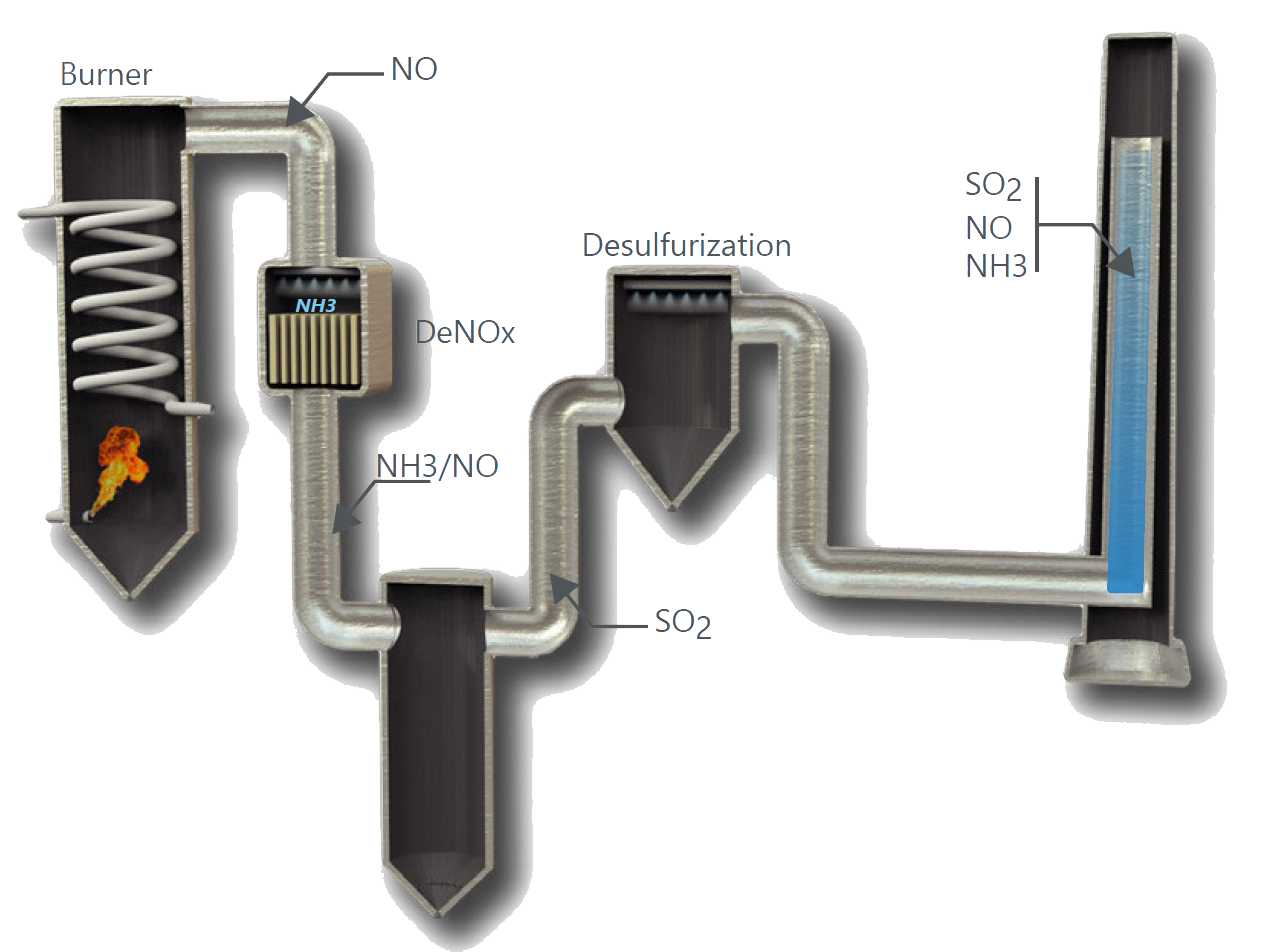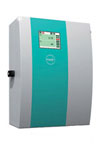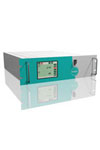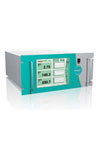Note: (i) Click on individual product to view its parameters. (ii) Click on Show All link to view parameters of all products.
| SHOW ALL | NH3 | NOX | SO2 | H2S | CS2 | Benzene | Toluene | Xylene | NCL3 |
| Power Plants |




|




|




|
||||||
| Chemical Plants |




|




|




|




|




|




|
|||
| Petro Chemical Plants |




|




|




|




|




|




|




|
||
| Bio Reactors |




|
||||||||
| Metal Industries |




|




|
Applications: DeNOx process
for thermal power plants
Nitrogen oxides (NOx) are formed at high temperature in the combustion process and constitute a major air pollutant, causing lung illnesses and acid rains. The nitrogen monoxide (NO), largely predominant in the flue gas, can be efficiently reduced by reaction with ammonia according to the reaction :
4 NO + 4 NH3 + O2 → 4 N2 + 6 H2O
Ammonia concentration must be carefully monitored because excess of ammonia lead to the formation of
ammonium salts , especially ammonium bisulphate, that is very corrosive and may produce clogging on the flue gas
circuit. Ammonia is also a significant atmospheric pollutant.
Coal power plants produce a high amount of sulphur dioxide (SO2) as sulphur is contained in the coal.
Desulphurisation process requires to follow the SO2 concentration before and after the process.





